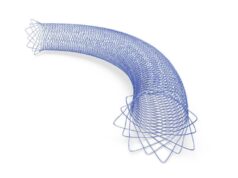
Endovascular treatment of unruptured intracranial aneurysms with the Derivo (Acandis) embolisation device is associated with high procedural safety and adequate occlusion rates. All procedures using the device were technically successful, with a morbidity rate of 2.4% and no mortality.
The study, published in the Journal of NeuroInterventional Surgery, retrospectively analysed all patients with unruptured intracranial aneurysms treated with the embolisation device between November 2015 and December 2017 at three German care centres. Procedural details, complications, and morbidity within 30 days after treatment, as well as the aneurysm occlusion rates after 6 months (O’Kelly–Marotta scale, OKM), were evaluated.
Implantation of the embolisation device was attempted in 42 patients with 42 aneurysms. All procedures were technically successful. Multiple embolisation devices were used in three aneurysms (7.2%; two embolisation devcies in two cases, three embolisation devices in one case) and adjunctive coiling was used in 11 (26.2%) cases due to large aneurysm size. Secondary balloon angioplasty was necessary in four cases (9.5%) in order to ensure appropriate wall apposition of the embolisation device.
Procedure-related complications occurred in four cases (9.5%) including three thromboembolic events and one aneurysm perforation. The morbidity rate was 2.4% and there was no mortality. One patient suffered an ischaemic stroke with persistent aphasia at 30-day follow-up due to a thromboembolic infarct (modified Rankin Scale score 1). Among 33 patients (78.6%) available for angiographic follow-up, complete (OKM D) and favourable (OKM C+D) aneurysm occlusion was obtained in 72.7% (24/33) and 87.9% (29/33), respectively.
The authors, from the University Hospital of Dusseldorf, University Hospital of Munich and University Hospital of Cologne, Germany, write: “Although the present study showed promising results regarding short-term safety and aneurysm occlusion rates, further studies with larger patient samples and longer follow-up periods will provide a definite conclusion about the safety and efficacy of the Derivo embolisation device.”










